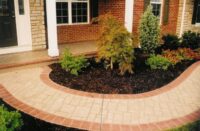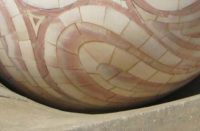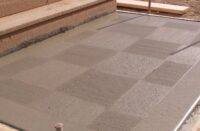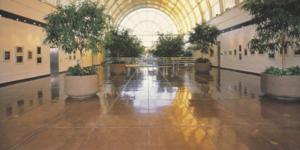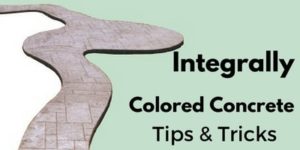
Decorative concrete contractors can reap significant benefits by partnering with their local ready-mixed concrete suppliers. This article will discuss how partnering, along with consistent selling messages, can improve a decorative concrete contractor’s bottom line.
Let’s start by looking at the problems we face
Contractors, subcontractors and suppliers can sometimes be put in adversarial roles. Because of the low-bid mentality that still dominates most construction sectors in the United States, trust is not always what it should be.
Building the bridge is worth it, because partnering has many advantages.
First, consistency is key. If your ready-mix partner is already engaged in driving color in your marketplace then everything is easy and can move quickly. Unfortunately, the United States is a big country and decorative concrete markets vary from the mature, like California, to places where little or none has been done in the past. In those developing markets, it is key to establish clear, open, honest communications with your supplier. Clearly communicate your needs regarding set time, slump and the other performance characteristics you need to succeed. Work together to create a mix that meets your finishing needs. Don’t just add water, as it will create issues with color. Do make test panels to ensure that your needs are being met and so that the specifier and owner’s representative don’t get a surprise when the project’s done. Everyone perceives things differently. All the parties in the value chain have expectations. Before they can be met, they must be agreed upon.
Your competition is other hardscaping materials and interior finishes, as well as products such as brick, pavers, exposed aggregate finishes and asphalt. Working together as a team, you and your local National Ready Mixed Concrete Association member can provide the most consistent, cost-effective and sustainable solutions to hardscape and interior decor applications.
Sharing the marketing
Product quality and meeting deadlines are not the only benefits of a partnership with your ready-mix supplier. Together you can spread the same selling messages in your marketplace and “grow the pie” more rapidly together.
What are some of the messages? Cost is king with GCs and many owners today, so let’s look at our cost-based message first. When comparing with other materials, it is important to make sure to compare based on the same units. Price per square foot is an easy way to compare different materials. Know the competition’s prices in your market and use them to your advantage. Brick, carpet, tiles, stone and various other finishes cost more in most if not all markets in the United States than many decorative concrete finishes. Check your market and you will see that the gaps can be large. Competing on cost is important as many markets are still coming out of the contracted construction economy.
Sustainability has traction in the design community, and we have some great messages. One to consider is the amount of virgin material being used to complete the project. If veneers of brick, stone or other materials are placed on top of a concrete slab, we use more materials than we do with typical decorative concrete applications. What’s more, utilizing low-VOC products in your decorative work means better indoor air quality.
NRMCA’s Green-Star certification of ready-mix plants is another program that ultimately helps you differentiate your product. For information, visit NRMCA.org and look at the certifications section. You will be surprised at the depth of the programs. Leverage your partner’s work if it can help.
Next, partner with homebuilders
Once you’ve built trust with your ready-mix guy, do the same with your local residential contractor.
The construction industry has many pockets of resistance that hinder innovation, change and new ideas. Litigation, or fear of litigation, can stifle innovation.
What’s more, general contractors are driven by first cost, sometimes to the point that they lose sight of the bigger picture, which is profit. Visit 10 model homes around you and see how many have decorative concrete. In the markets I see, the number is low or zero. Yet they all have high-end Jacuzzis, granite countertops and upgraded carpet.
These barriers can be overcome. Partner with a homebuilder to get decorative concrete in one room in a model. Work to have some decorative hardscaping at the entrance. Show them how to make money with decorative as an upgrade package that they put on their menu of upgrades. Partnering with the general contractor is good for all involved.
Also, get the homebuilder to add decorative concrete as an option in lieu of other finishes.
In order for decorative concrete to gain acceptance with specifiers who have not used it before, it is important for them to feel comfortable with it. They need to feel like their risk is low. Referencing projects of the same scale as the project they are considering is one way you can help, because most specifiers don’t like to be the first person to do something new.
Homebuilders have a hard time “getting out of their box” sometimes, so assuring them about cost and scheduling issues is important.
Working together with your ready-mixed concrete supplier is a good first step in converting your market. Working together with your local homebuilder is step two.
